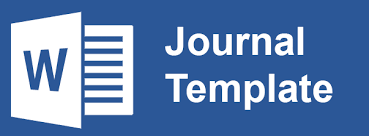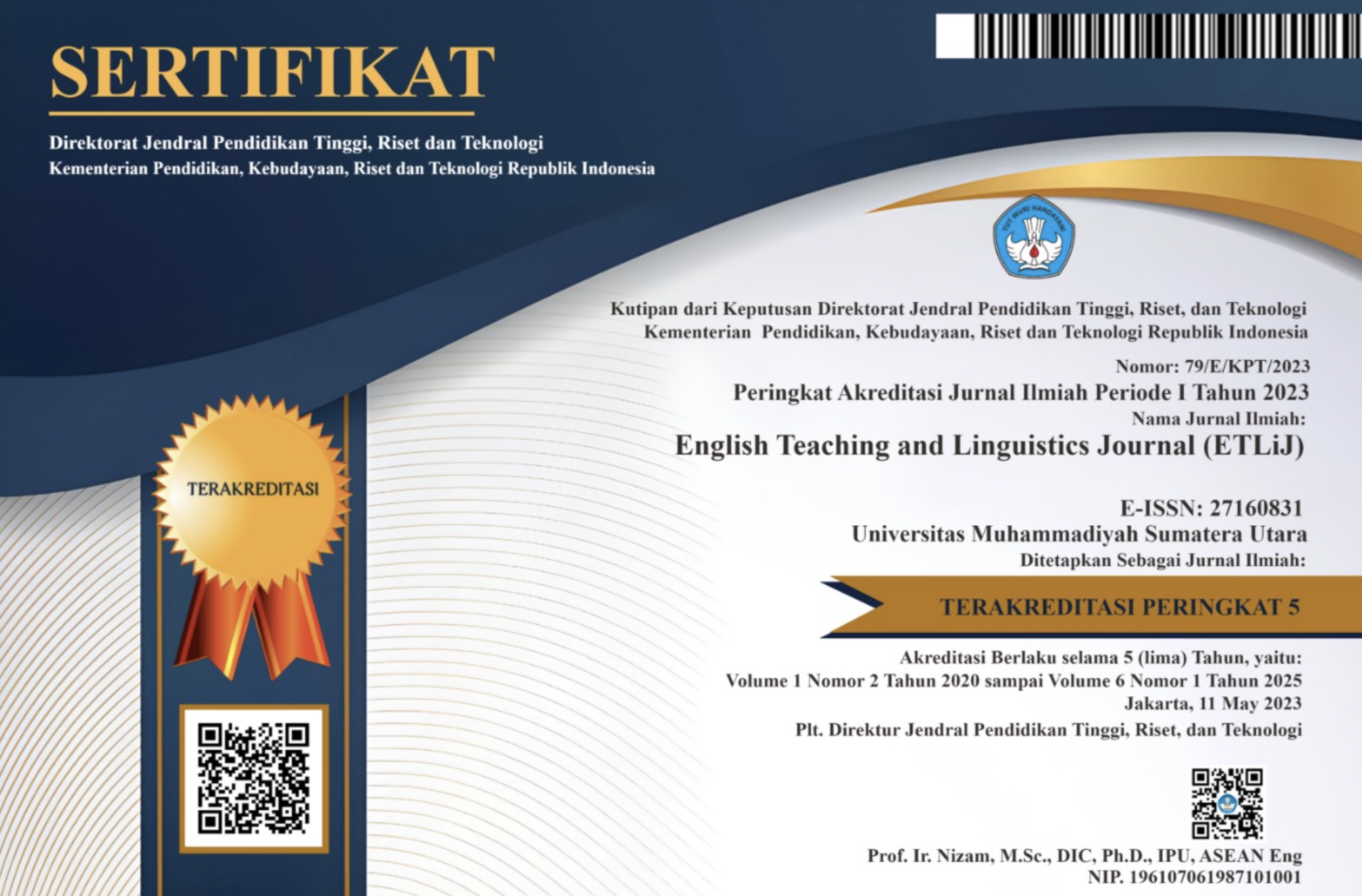An Error Analysis of Students Writing Descriptive Text at Grade XI in SMK Taman Siswa Suka Damai Academic Year 2021/2022
Abstract
This research was conducted to analyze the studentserror in writing descriptive text and what are the students dominant errors in writing descriptive text. The objective of this research wasto analyze and describe the students error and to analyze and describe the dominant error made by the grade XI studentsof SMK Tamansiswa Sukadamai. This research used document analysis in collecting and analyzing the data. The subject of this research was the eleventh grade students at SMK TamanSiswa SukaDamai in 2021/2022 academic year which consistedof 25 students. Firstly, students were given essay test about descriptive text. Afterwards, the data were analyzed and classified the error by using the surface strategy taxonomy. The technique of collecting data was essay test. The researcher used the technique of analyzing the data from Dulay theory (1982) surface strategy taxonomy. The result of the research showedthat there were error of omission is 35 (24%), error of addition is 11 (8%), error of misformation is 94 (64%), and error of misordering is 6 (4%). Based on the result of students test, the highest percentage of the test result in writing recount text is misformation with a percentage rate of 64%, it means misformation is the dominant error faced by students.
Keywords
Full Text:
PDFReferences
Agustiningsih, F., Faculty, T. H. E., &Tarbiyah, O.F. (2010). The Error Analysis od Students.
Arikunto. (2010). Procedure Penelitian : A Practical Approach, Jakarta : Rineka Cipta.
Brown, H. Douglas. (2004). Language Assesment Principles and Classroom Practices. New York: Pearson Education, Inc
Brown, H. Douglas. (2007). Principle of Language Learning and Teaching.Fifth Edition. USA: Pearson Education, Inc
Bryne, Donn. (1979). Teaching Writing Skill.England: Longman
Corder, S.Pit. (1973). Introducing Applied Linguistics. Great Britain: Penguin Education
Corder, S.Pit.(1981). Error Analysis and Interlanguage.London: Oxford University Press.
Clouse, B. F. (2004). The Student Writer: Editor and Critic (Seventh Ed). Boston: MCGrowhill Companies. Inc.
Dulay, Burt and Krashen.(1982). Language Two. New York: Oxford University Press.
Ellis, Rod. (1985). Understanding Second Langge Acquistion. New York: Oxford University Press
Ellis, Rod (1997). Second Language Acquisition. New York: Oxford University Press.
Harmer, Jeremy. (2004). ThePractice of English Language Teaching. 4th ed. London: Longman.
Halliday, M.A.K. (1991). Spoken and Written Language. Victoria: Deakin University.
Hartono, Rudi. (2005). Genre Englis Text Types: Theory and Practice. Semarang States Univercity : English Departement
Jack C Richards and Gloria P Sampson, (1973). Error Analysis : The Study of Learner English Error Analysis Perspectives on Second Language Acquistion, London. Longman
Kathryn Anderson and Mark Anderson.(1998). Text Type in English 3. South Yara: McMillan Ltd.
DOI: https://doi.org/10.30596/etlij.v3i1.9322
Refbacks
- There are currently no refbacks.

This work is licensed under a Creative Commons Attribution 3.0 License
ISSN: 2716-0831





